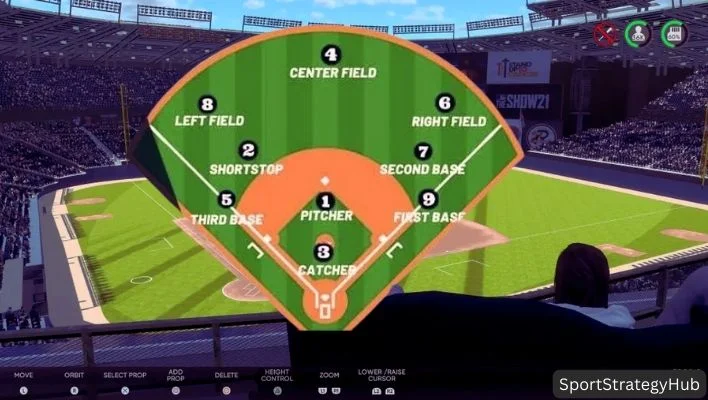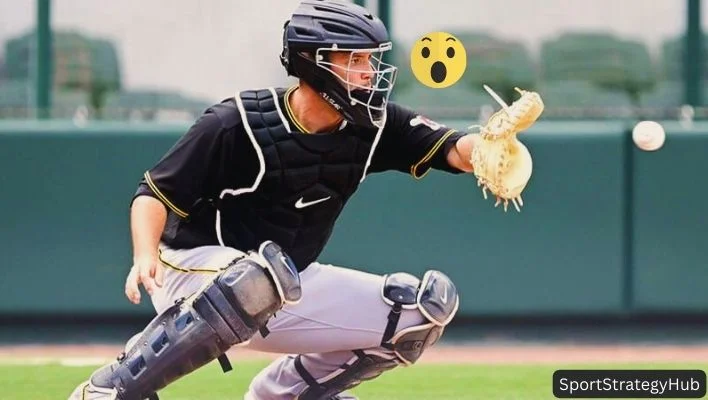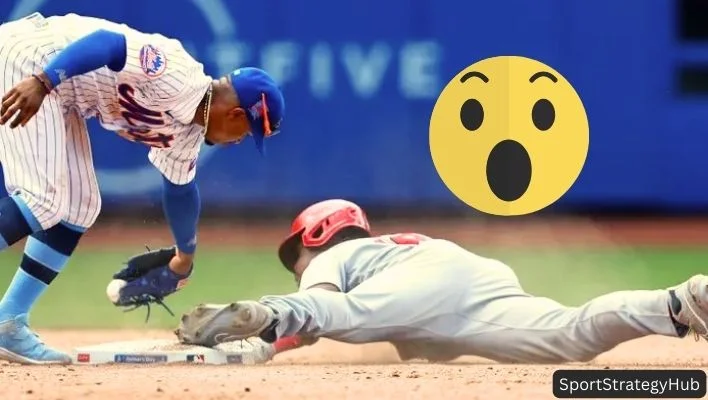How Many Baseball Players on The Field: Positions & Roster Sizes
When it comes to answering the question of “how many baseball players on the field,” for each team, the answer is nine. This arrangement ensures the game flows smoothly. Each player has a unique role and position that is vital for the team’s strategy and success. Baseball’s unique blend of individual skills and team collaboration is a key aspect of its enduring popularity.
Players are tasked with mastering their designated roles, such as pitching, catching, or fielding. This emphasizes the significance of personal excellence and teamwork. The widespread appeal of baseball comes from its deep history and the excitement it brings to fans. It also has the power to bring people together, turning it into a treasured tradition in many communities.
How Many Players in a Baseball Team
A baseball team consists of a specific number of players who contribute their skills to the game. This arrangement ensures smooth gameplay. Every player’s unique role and position are vital for the team’s strategy and success. Learn about the importance of each position and how they work together to execute offensive and defensive strategies. Compare the varying team sizes across different levels of play, from Little League to professional baseball.
Baseball Positions in Order of Importance
Baseball positions vary in their importance and the impact they have on the game. Explore the order of importance among positions, considering factors such as defensive responsibilities, offensive contributions, and strategic influence. Learn about the core positions like pitcher and catcher, along with the roles of infielders and outfielders. Gain insights into why certain positions are considered more crucial than others in the game of baseball.
See Also: How to Score a Baseball Game

Catcher
The catcher plays a crucial role in the game of baseball, managing defensive plays and working closely with pitchers. Discover the responsibilities of a catcher, including receiving pitches, blocking the plate, and throwing out baserunners. Learn about their communication skills, ability to read the game, and the importance of their defensive presence behind the plate.
Pitcher (Hurlers)
The pitcher, also known as a hurler, holds a significant role in baseball. Discover how pitchers initiate gameplay by delivering pitches to the batter, influencing game strategy through their pitching skills. Learn about the different types of pitches and the importance of accuracy, control, and strategy in their role on the field.
First Baseman, Second Baseman, Third Baseman, Shortstop:
The infield positions are essential for fielding ground balls and making defensive plays. Explore the individual responsibilities and importance of each infield position:
- First Baseman: The first baseman, stationed near first base, handles ground balls and helps with force outs at first base.
- Second Baseman: The second baseman, who stands close to second base, covers that area and helps in making double plays.
- Third Baseman:The third baseman stands near third base, catching ground balls and covering the area around it. They also throw to first base.
- Shortstop: The shortstop is positioned between second and third base and covers a wide area. They play a key role in catching ground balls and executing double plays.
Gain insights into the specific skills, challenges, and contributions of each infield position in the game of baseball.
Left Fielder, Center Fielder, Right Fielder:
Outfield positions are responsible for fielding fly balls and defending against hits. Explore the roles of each outfield position:
- Left Fielder: Positioned in left field, the left fielder covers the left side of the outfield and supports the infielders.
- Center Fielder: Positioned in center field, the center fielder covers a large area and handles a significant number of fly balls.
- Right Fielder: The right fielder, stationed in right field, covers the right side of the outfield and helps defend against hits.
Discover the specific responsibilities and skills required for each outfield position and their contributions to the team’s defensive performance.
Best Position in Baseball
Deciding which position is the best in baseball varies from person to person and relies on personal preferences and abilities. Explore different perspectives on the most desirable position, considering factors such as offensive contributions, defensive skills, leadership qualities, and strategic impact. Learn about positions that offer opportunities for individual excellence or significant influence over gameplay, and discover the factors that make a position highly sought after in the game of baseball.
See Also: How Many Bases are in Baseball
Hardest Position in Baseball

Baseball positions each present unique challenges and skill demands. Explore the positions that require exceptional physical abilities, quick reflexes, and advanced defensive skills. Discover the most difficult position to play in baseball, considering factors such as the speed of the game, defensive responsibilities, and the mental demands of the position. Gain insights into the skills and attributes necessary to excel in challenging positions on the field.
What is the Easiest Position to Play in Baseball?
While every position in baseball requires skill and dedication, some positions may be considered easier to play due to fewer specialized skills or specific responsibilities. Explore positions that may be perceived as easier, considering factors such as offensive contributions, defensive demands, and the overall complexity of the position. Learn about the role these positions play on the field and the attributes that contribute to success in these positions.
What is the Most Dangerous Position to Play in Baseball and Why?
Certain baseball positions involve a higher risk of injury due to their proximity to high-speed plays or potential collisions. Examine the positions in baseball considered the most risky and understand the factors contributing to their heightened danger. Consider factors such as the potential for collisions with baserunners, the risk of being hit by batted balls, and the physical demands of specific positions. Discover the safety measures and skills required to mitigate risks in these positions.

How Many Baseball Players on the Field in MLB
During Major League Baseball (MLB) games, there are always a specific number of players playing on the field. Discover the standard player count in MLB games, which typically consists of nine defensive players, including a pitcher, catcher, infielders, and outfielders. Explore variations in player counts based on strategies, substitutions, and positional changes throughout the game. Gain insights into the flexibility and adaptability of MLB teams in adjusting their player configurations to maximize performance and strategic advantages.
See Also: Average Length of MLB 2024
Fantasy Baseball Roster Size

Roster sizes in fantasy baseball vary depending on the league and its specific rules. Explore the typical roster sizes in fantasy baseball, including the number of active players, bench spots, and any positional requirements. Understand the impact of roster sizes on team management, strategy, and the player pool available for selection. Gain insights into the challenges and considerations involved in building and managing a fantasy baseball team within the constraints of roster size.
Roster Size in Little League Baseball Team
In Little League baseball, roster sizes vary based on league regulations and the number of players available. Explore typical roster sizes for Little League teams, considering factors such as age divisions, player development goals, and the need for player participation. Understand how roster sizes influence playing time, skill development, and team dynamics in Little League baseball.
Roster Size in High School Baseball
High school baseball teams have specific roster sizes determined by school policies and league regulations. Explore the typical roster sizes for high school baseball teams and how they impact team dynamics, player development, and playing time. Understand the challenges and considerations involved in managing roster sizes at the high school level and their influence on team performance.
Roster Size on College Baseball Teams
College baseball programs have specific roster sizes determined by NCAA regulations and the team’s budgetary constraints. Explore the roster sizes on college baseball teams and how they impact team composition, player recruitment, and scholarship distribution. Understand the considerations and challenges involved in managing roster sizes at the college level and their influence on team performance and competition.
Roster Size on a Professional Baseball Team
Professional baseball teams, like those in Major League Baseball (MLB), have specific roster sizes determined by league regulations. Explore the roster sizes on professional baseball teams and the considerations involved in managing player contracts, team composition, and performance. Understand the dynamics and challenges of constructing a competitive roster within the limitations of professional baseball.
FAQs
In baseball games, there are typically three players in the outfield: the left fielder, center fielder, and right fielder.
Yes, Major League Baseball teams still have 40-man rosters, although there are specific rules and regulations governing roster management.
There are currently 30 Major League Baseball teams, evenly divided between the American League and the National League.
A designated hitter (DH) is a player in the lineup who bats instead of the pitcher.
MLB rosters expand to 26 players in the 2020 season, allowing teams to carry an additional player.
conclusion
The number of players on a baseball field can vary depending on the level of play and the rules of the league. While the minimum number of players on the field is nine, the maximum can reach up to thirteen. Each position on the field plays a vital role in the game, contributing to both offensive and defensive strategies. Knowing the number of players on the field and their roles helps us better understand the complexities of baseball. If you have any further questions or want to explore more about baseball positions and roster sizes, feel free to reach out and continue your journey into the fascinating world of baseball.
